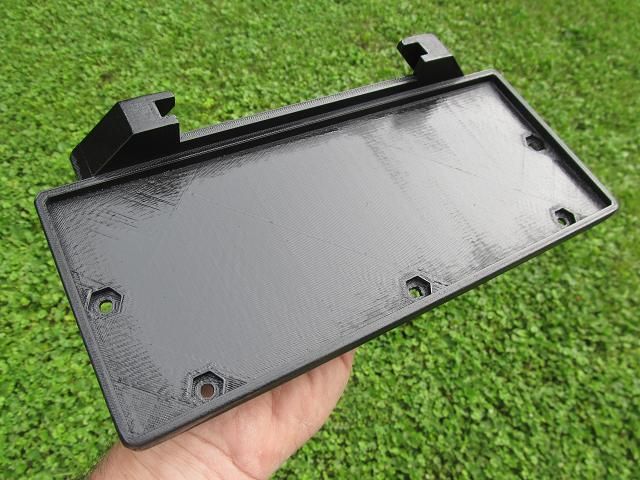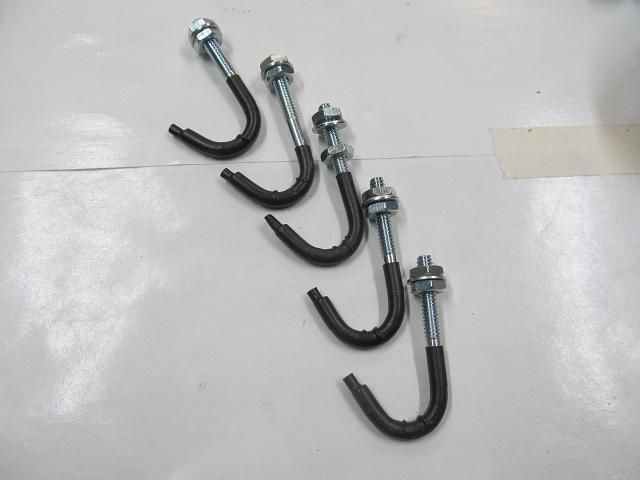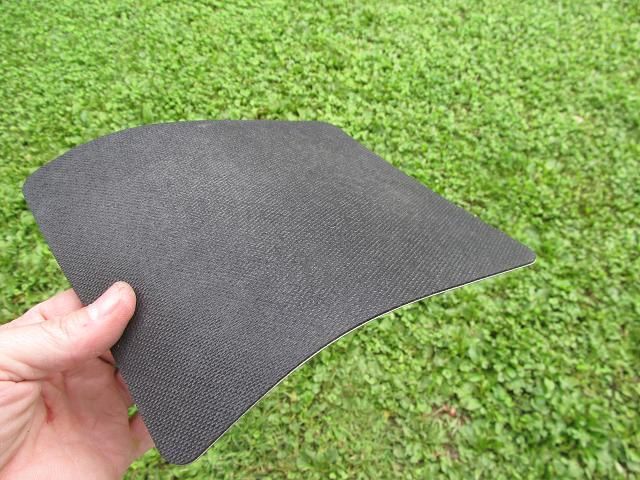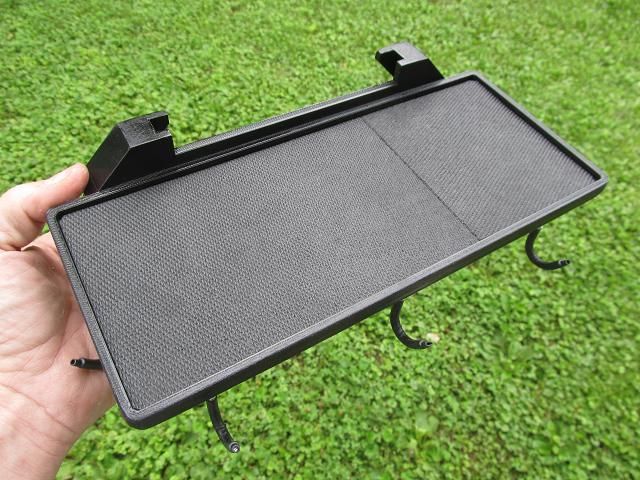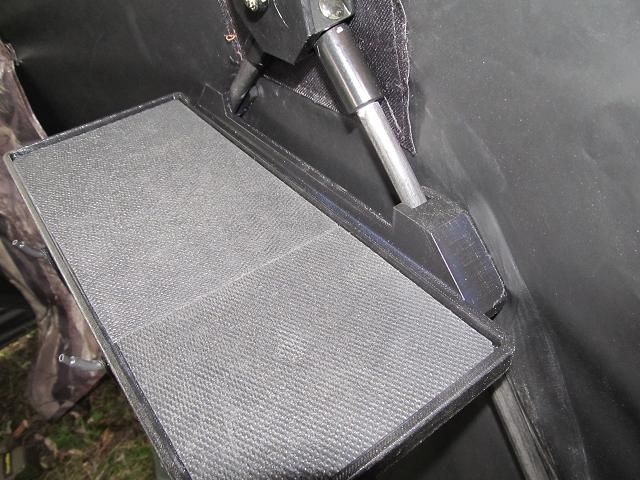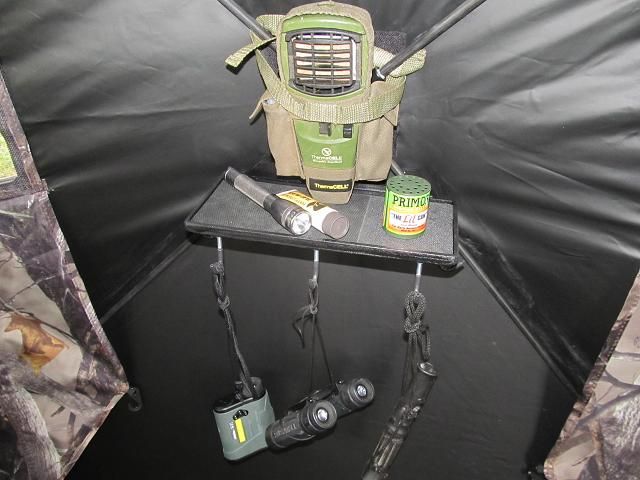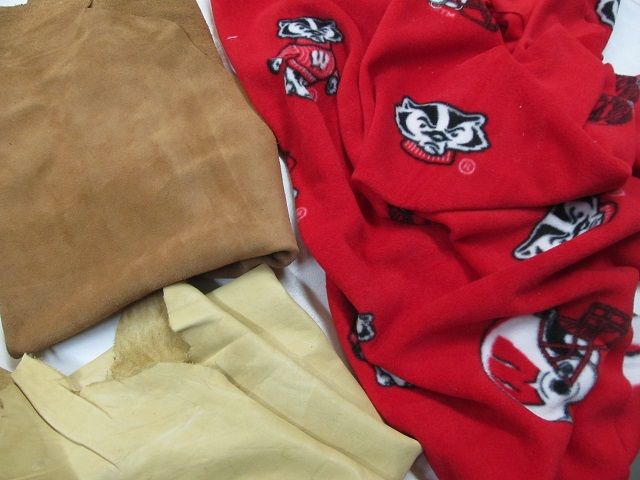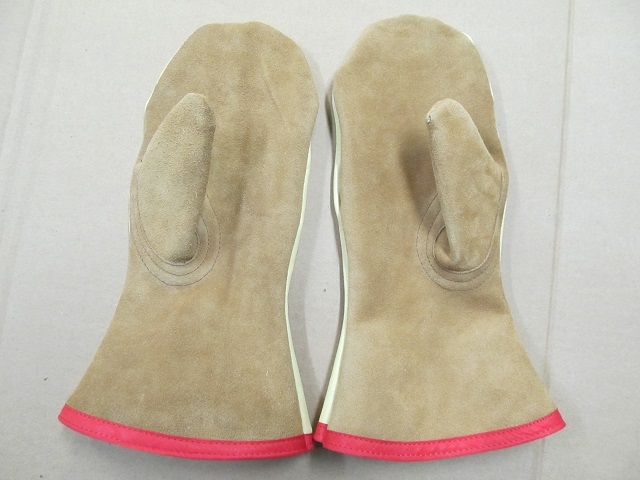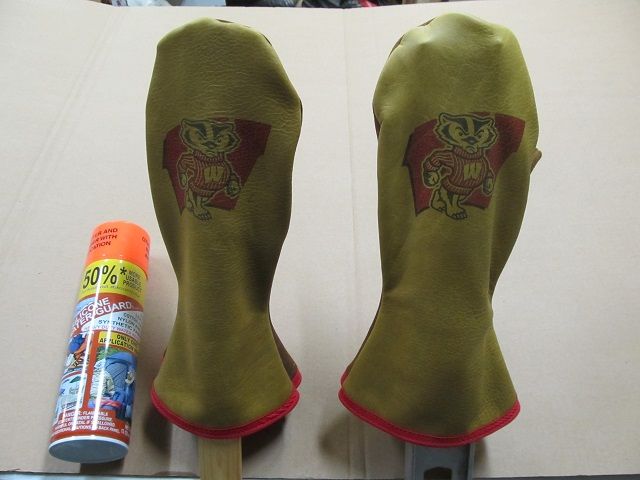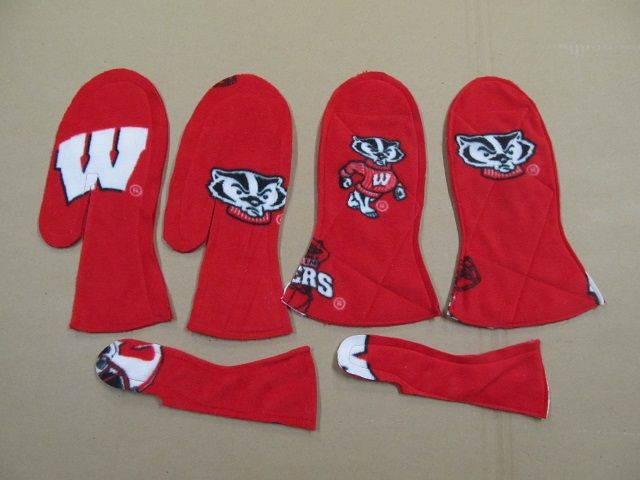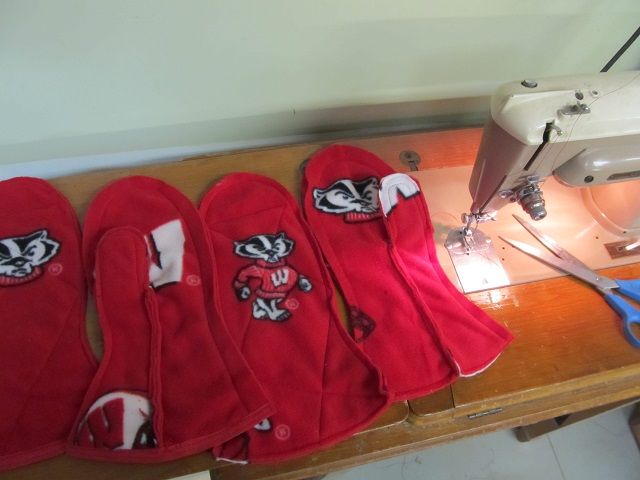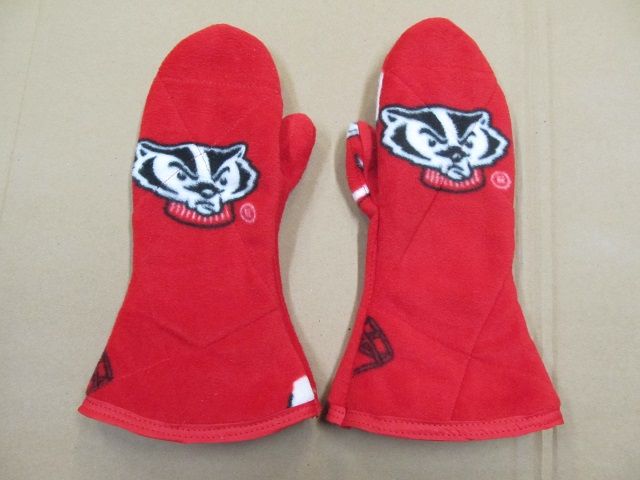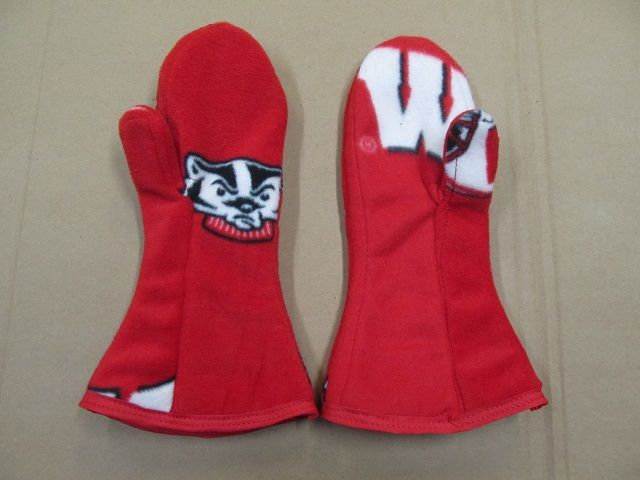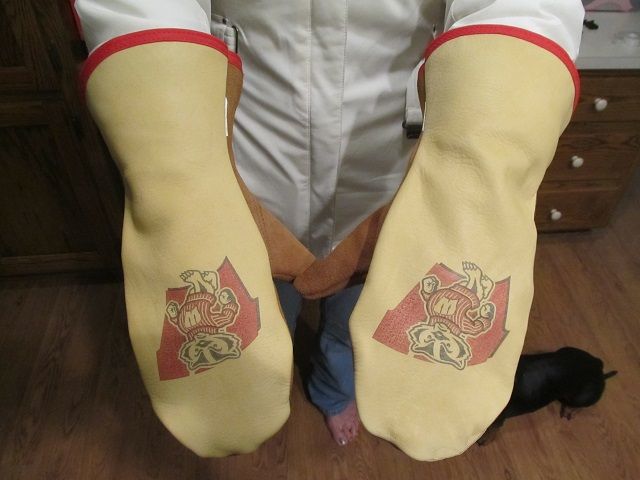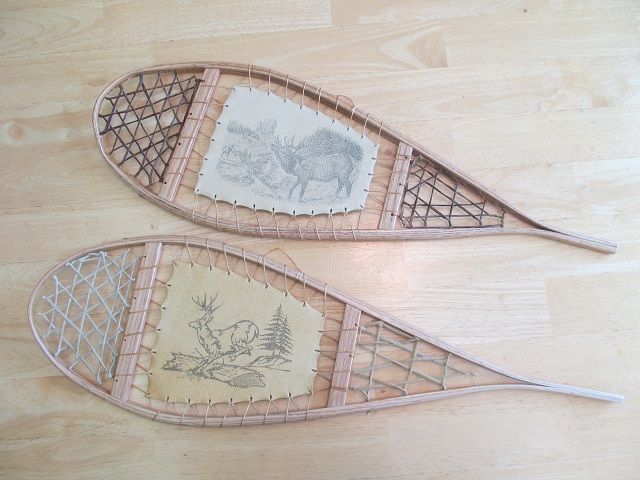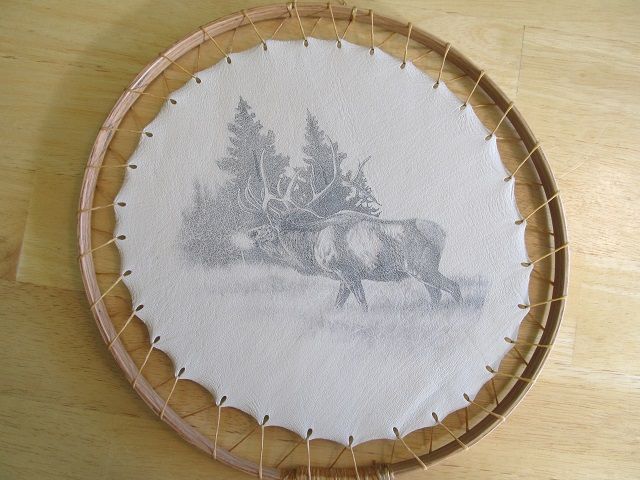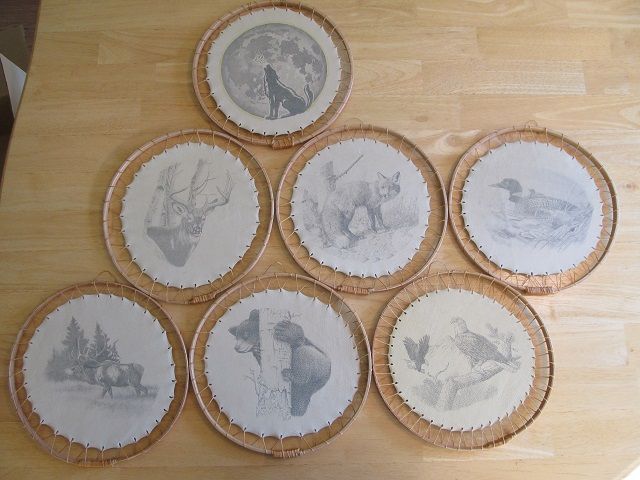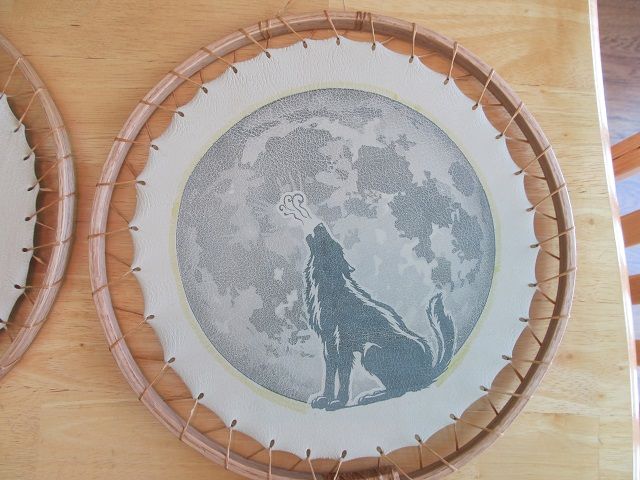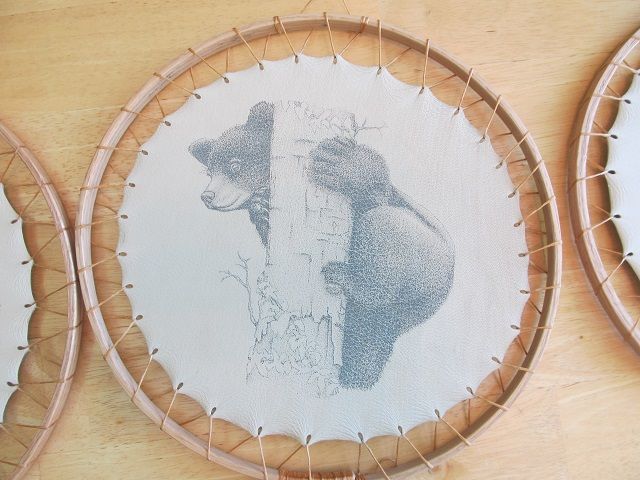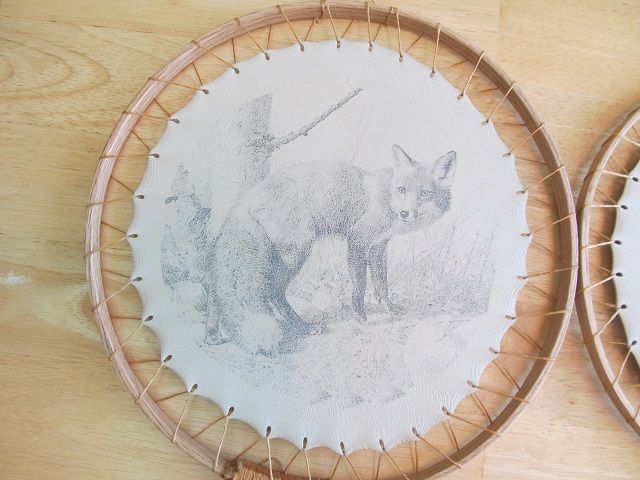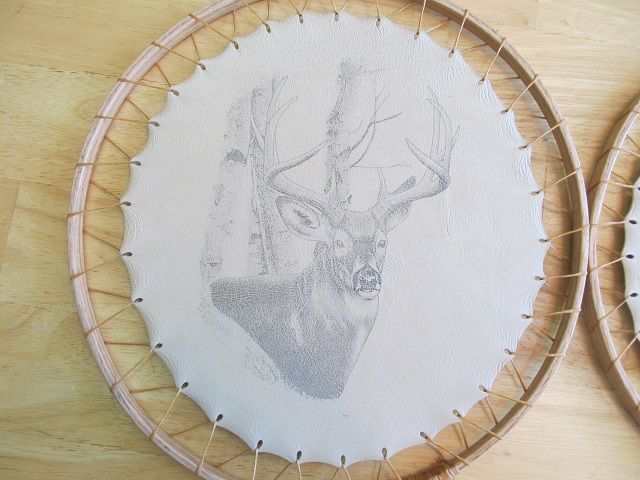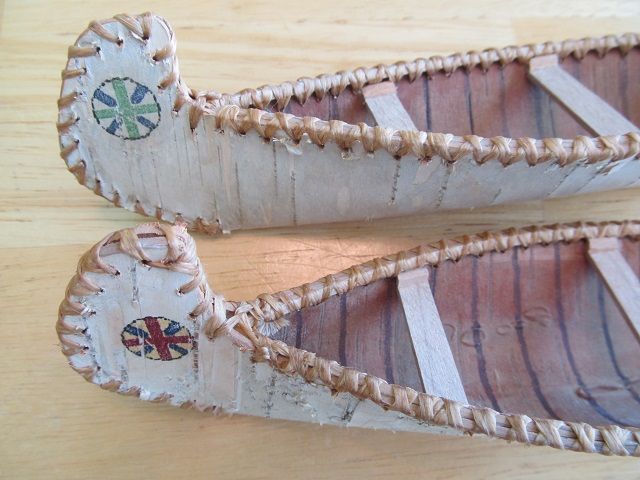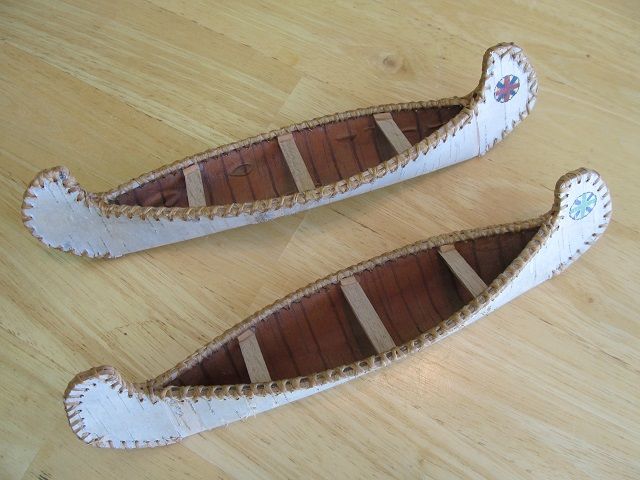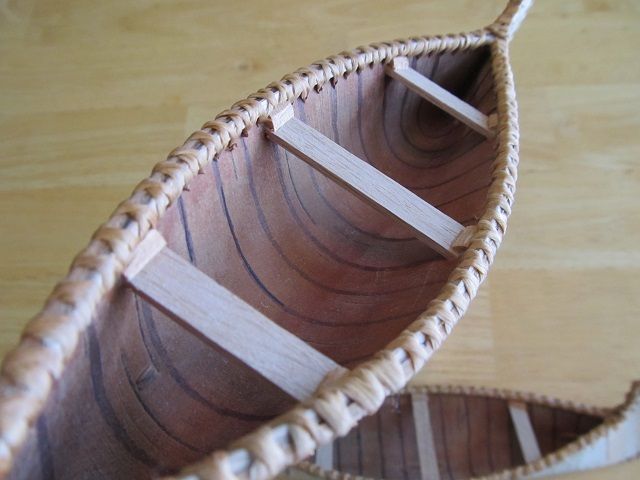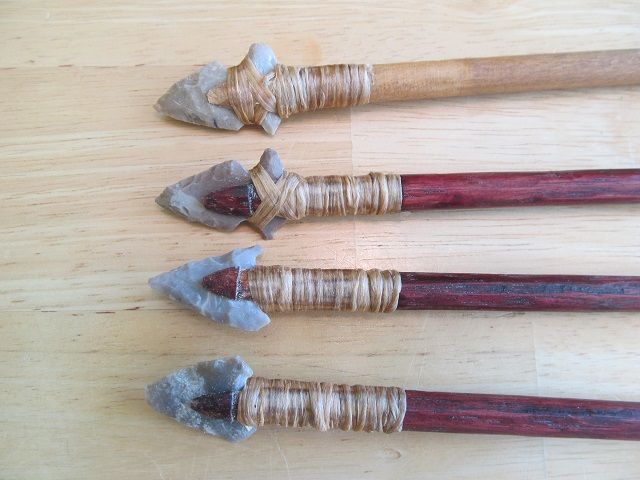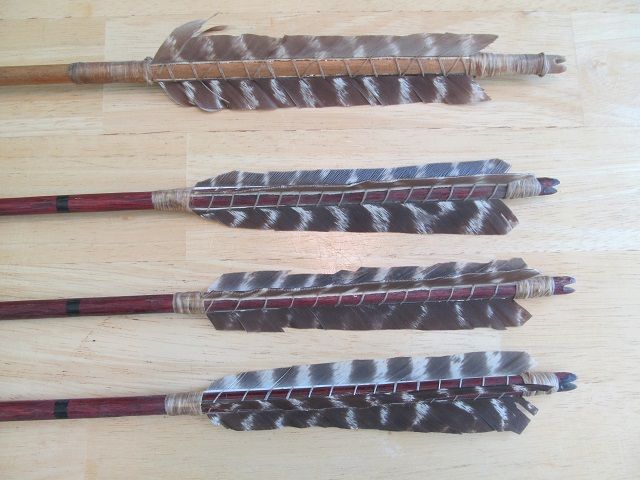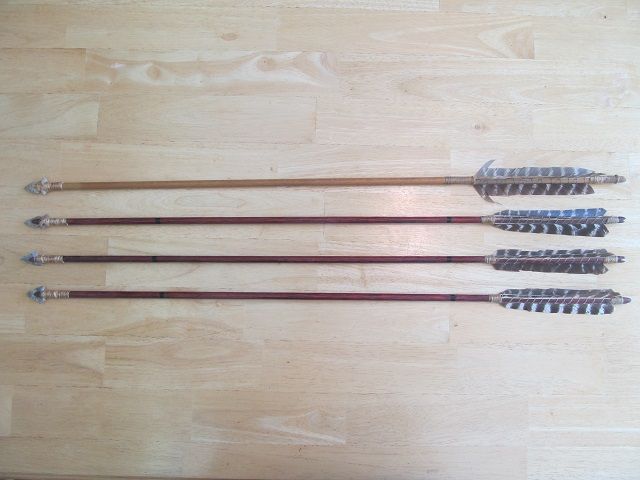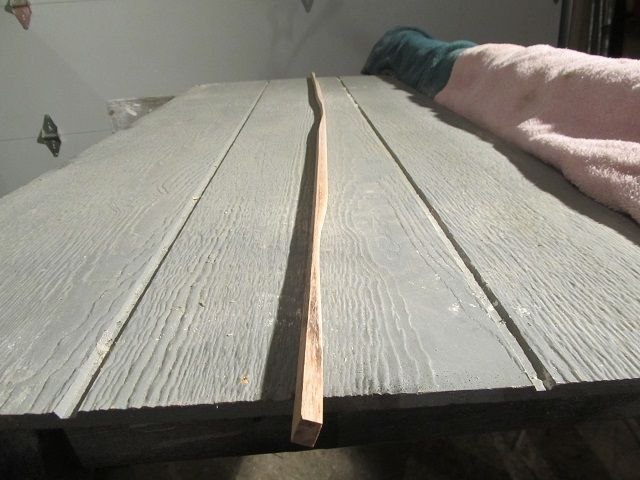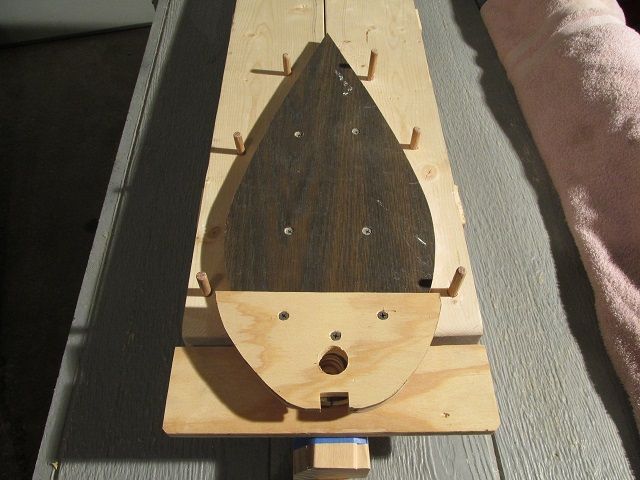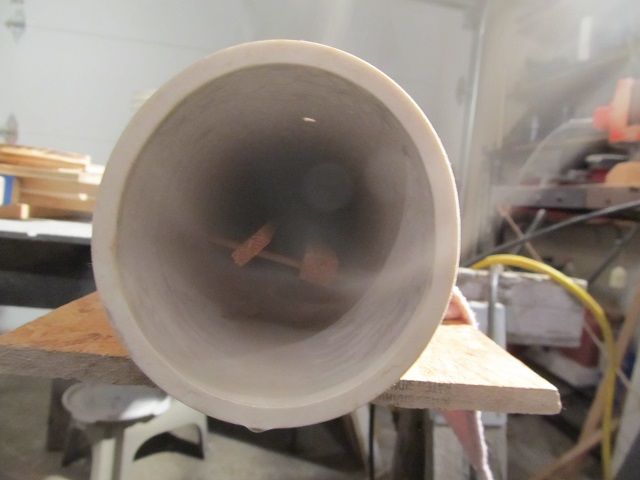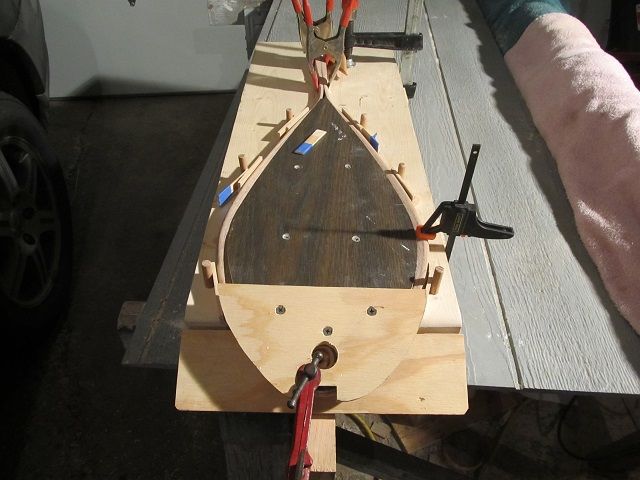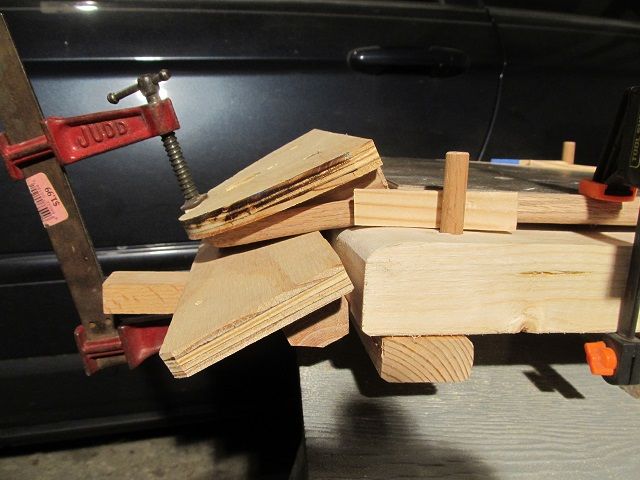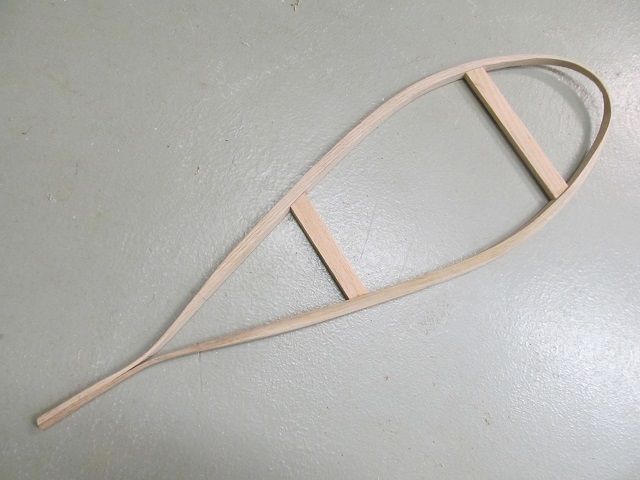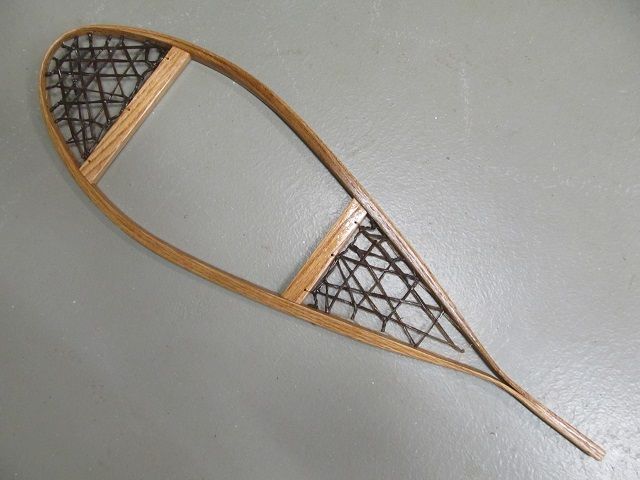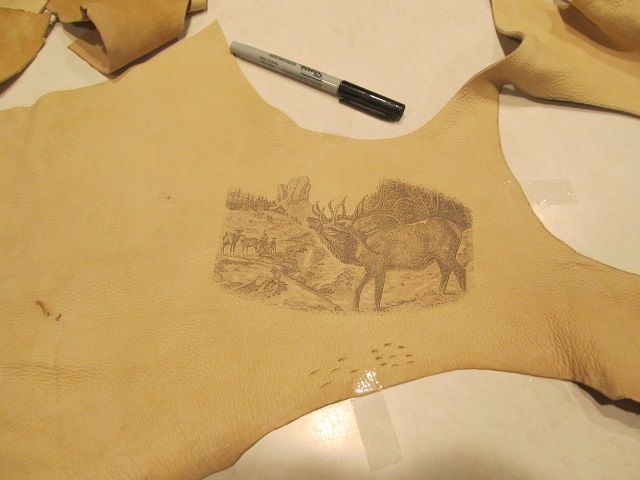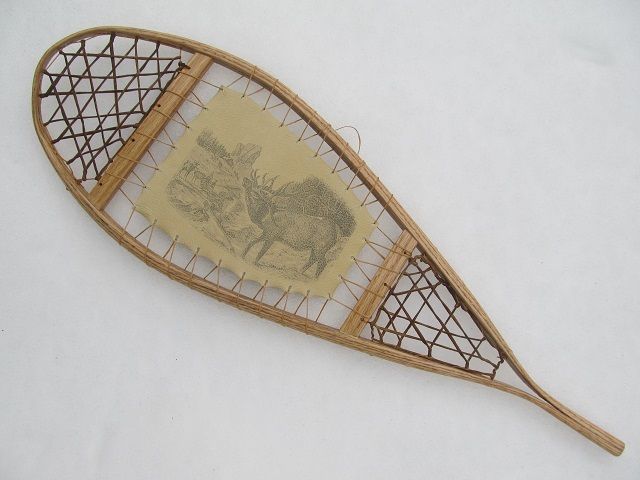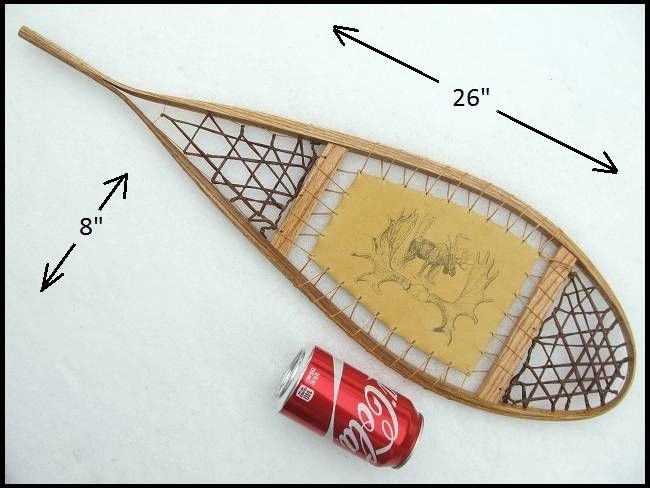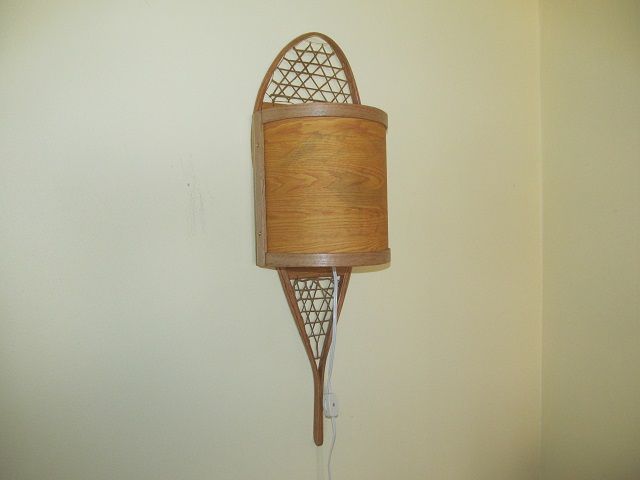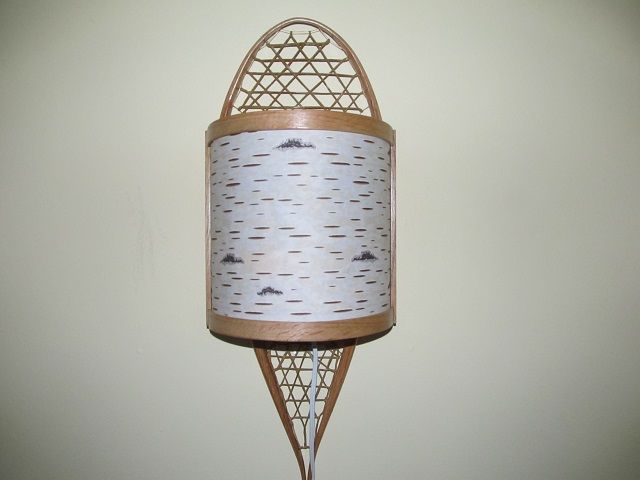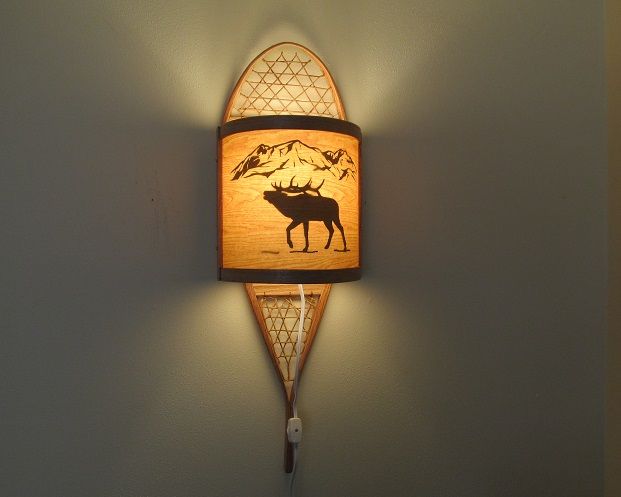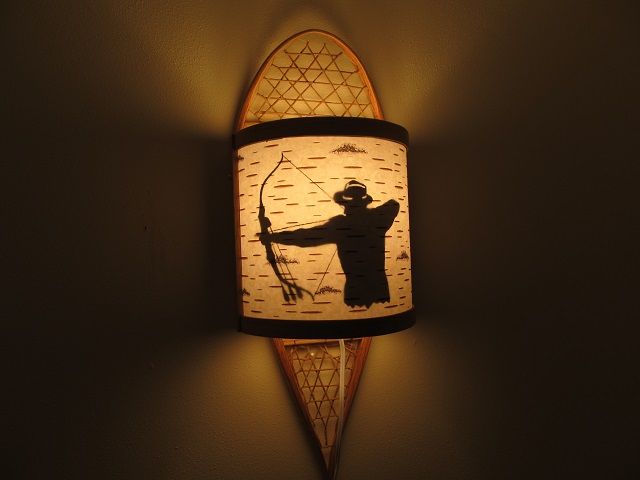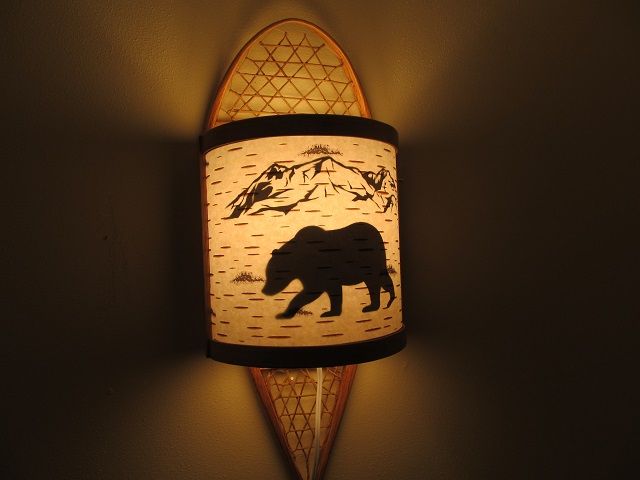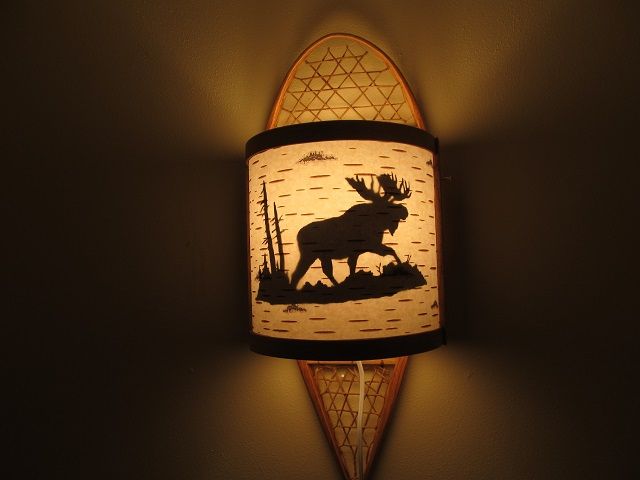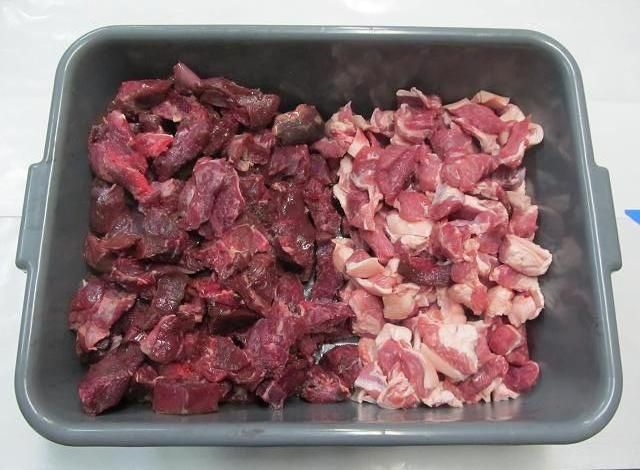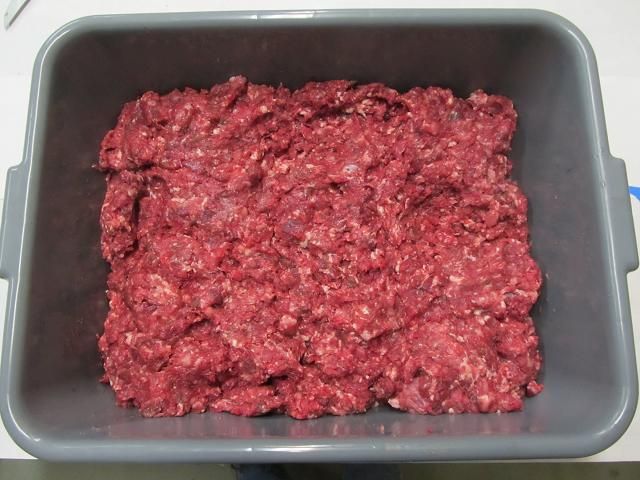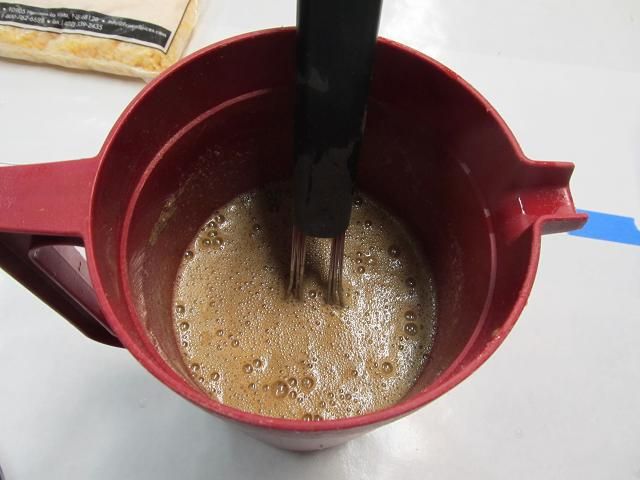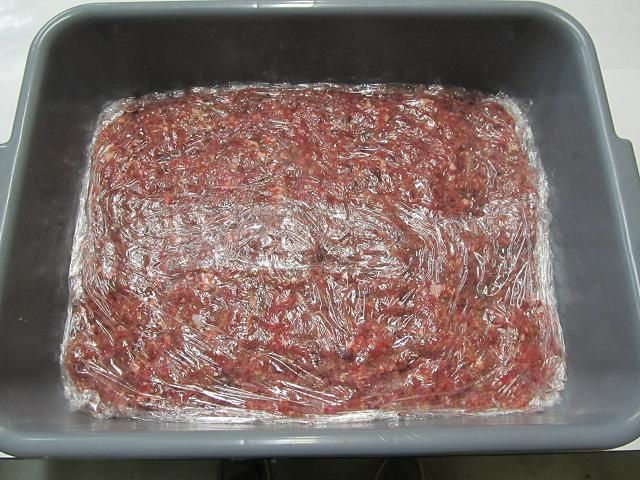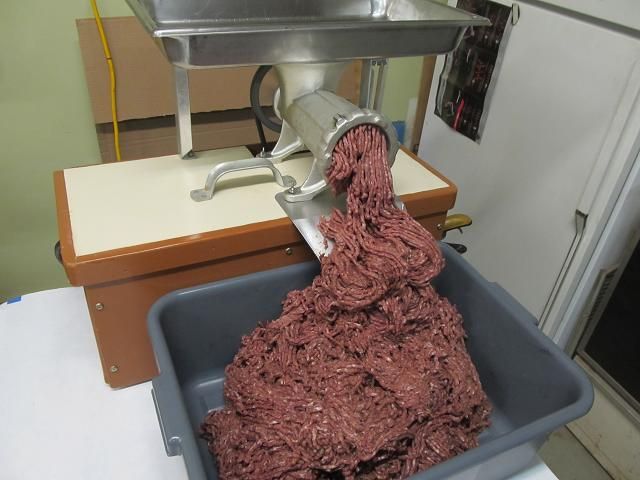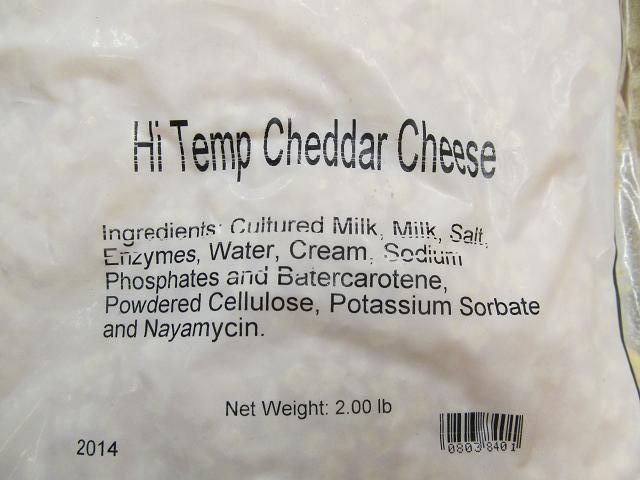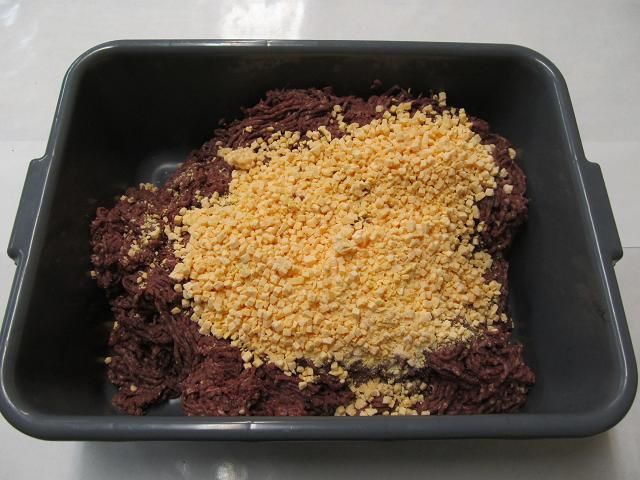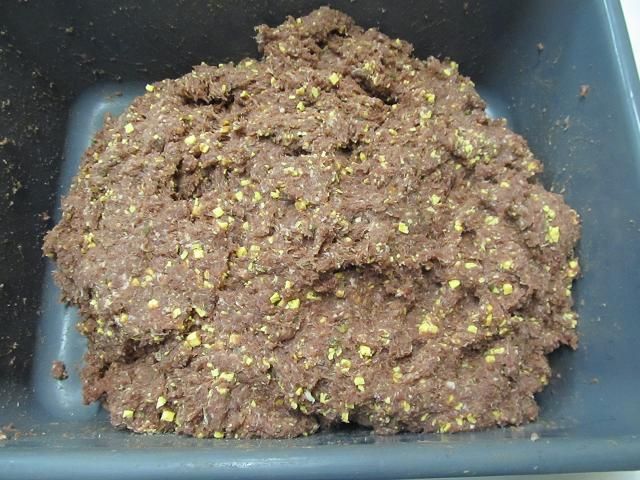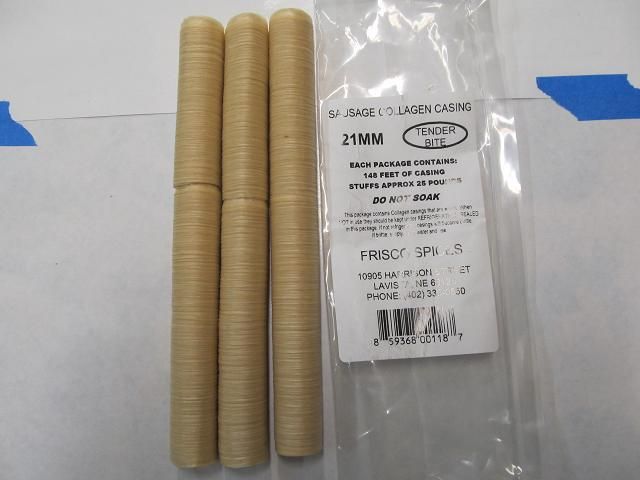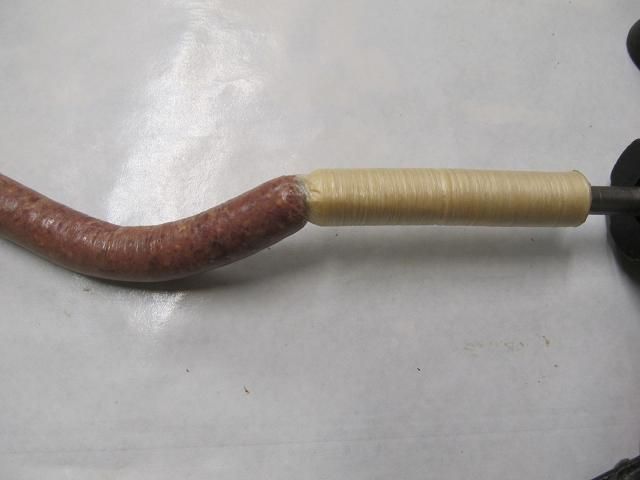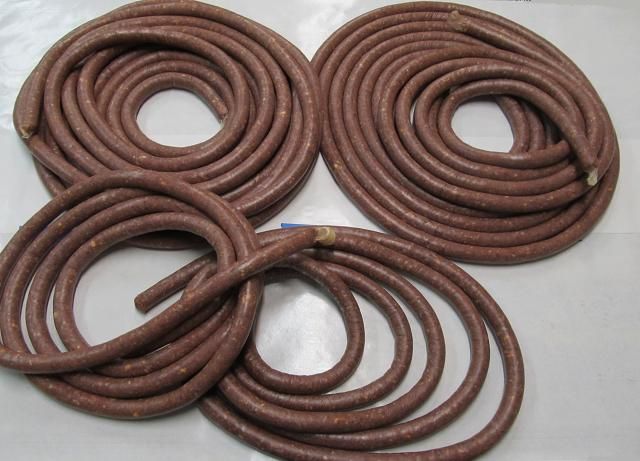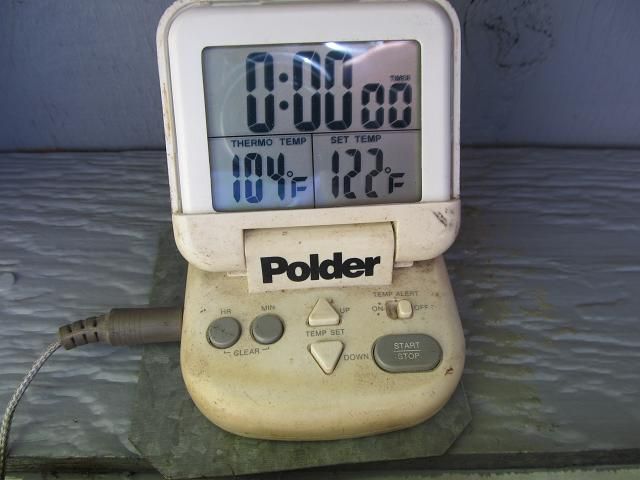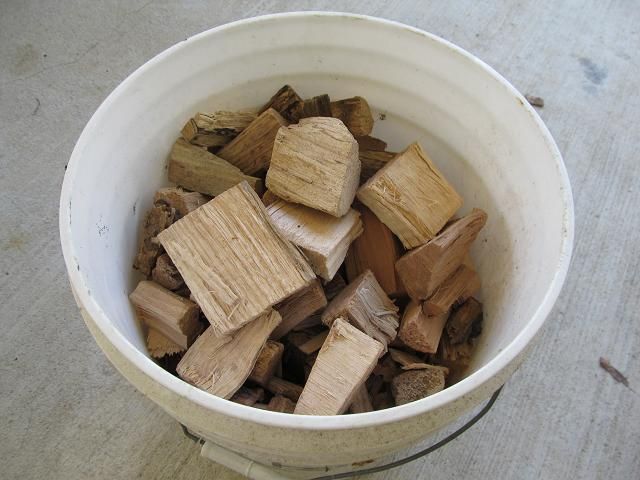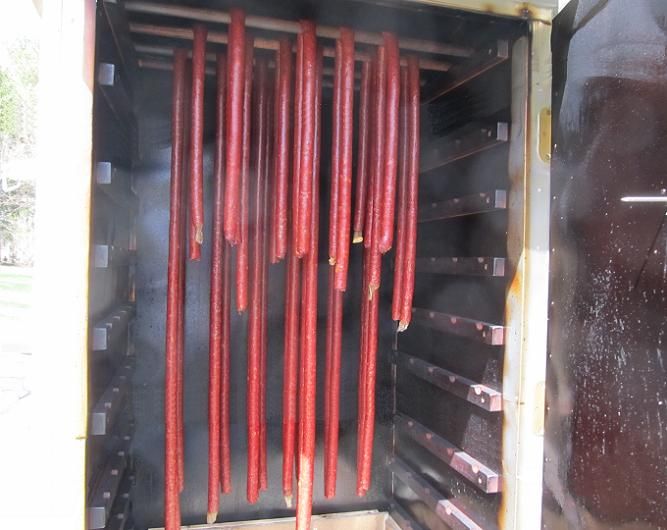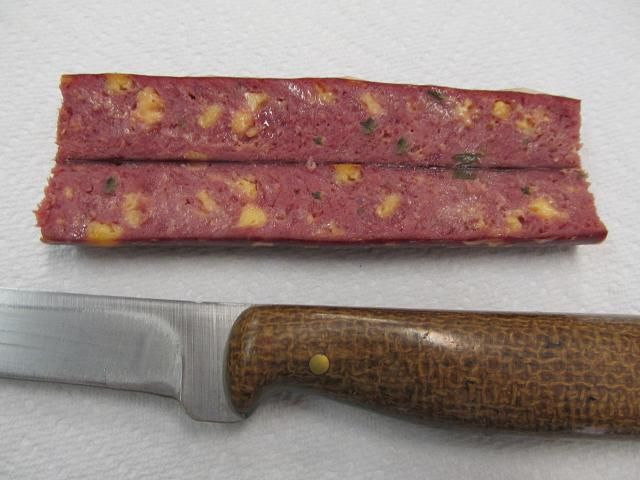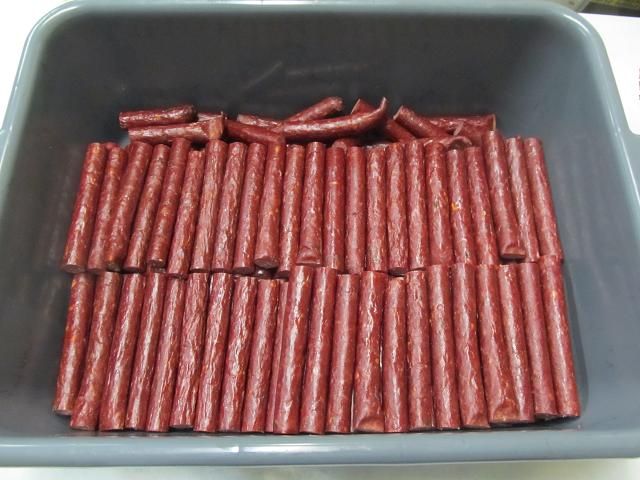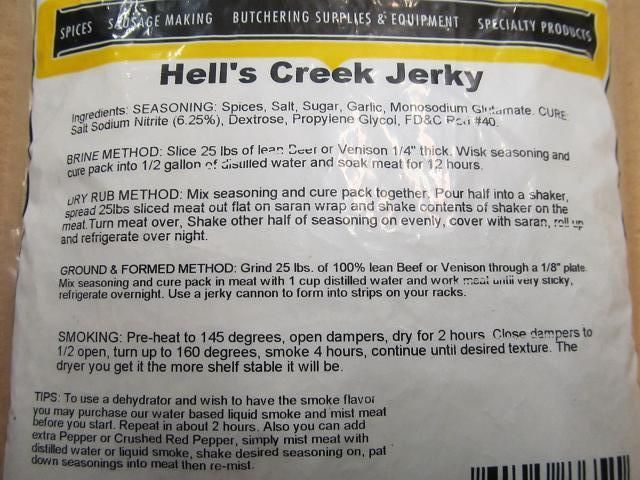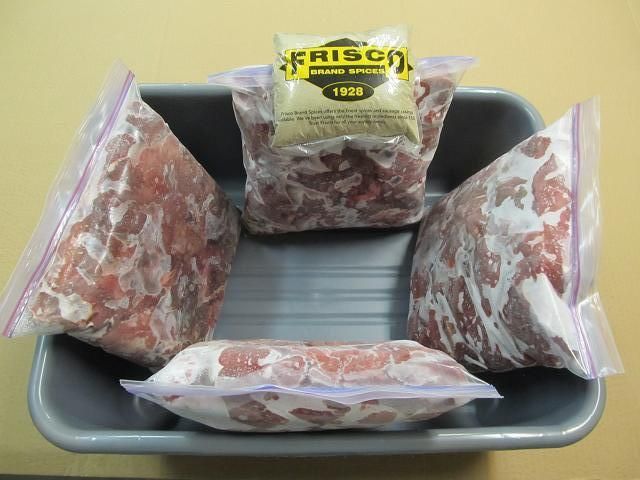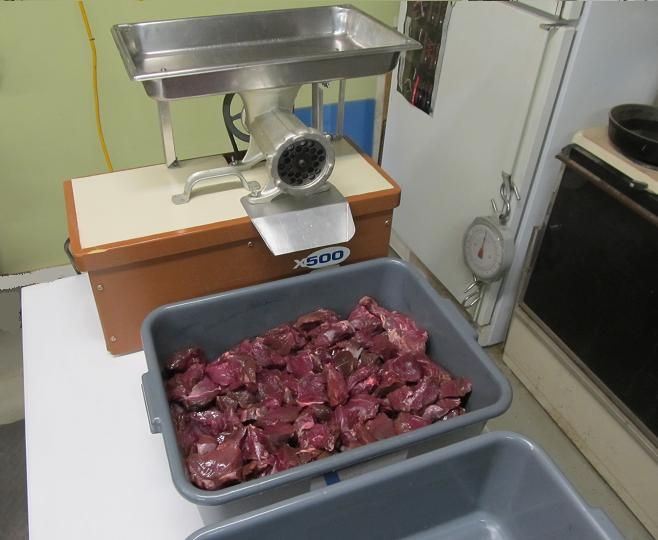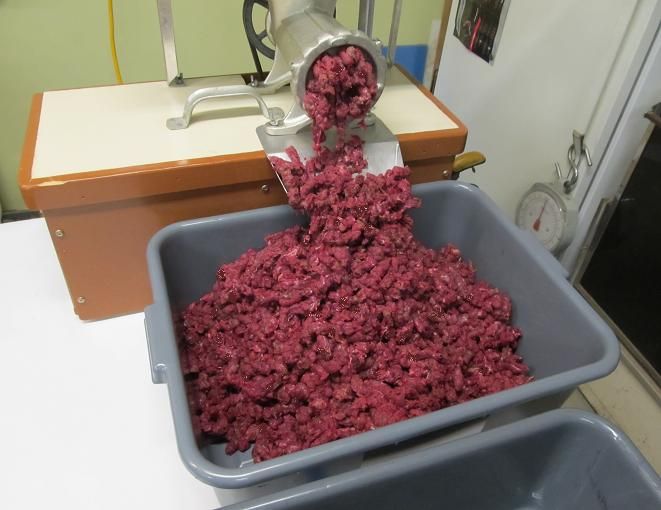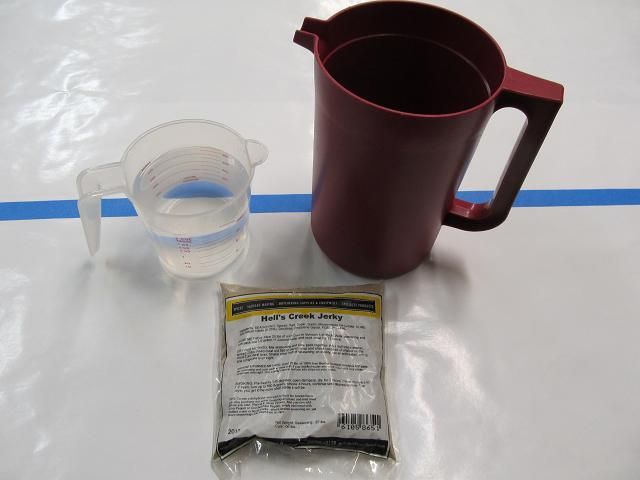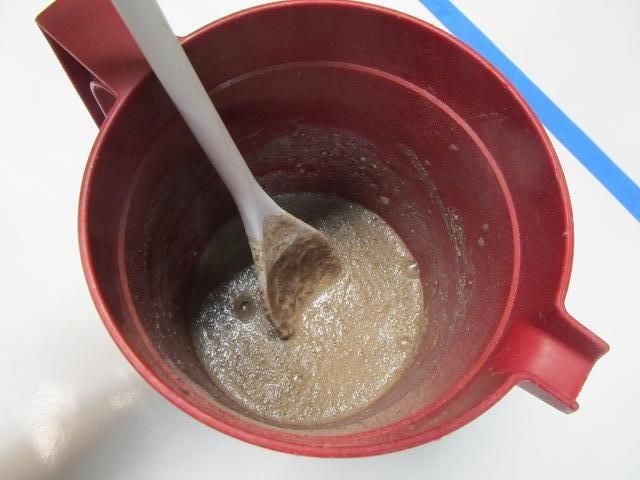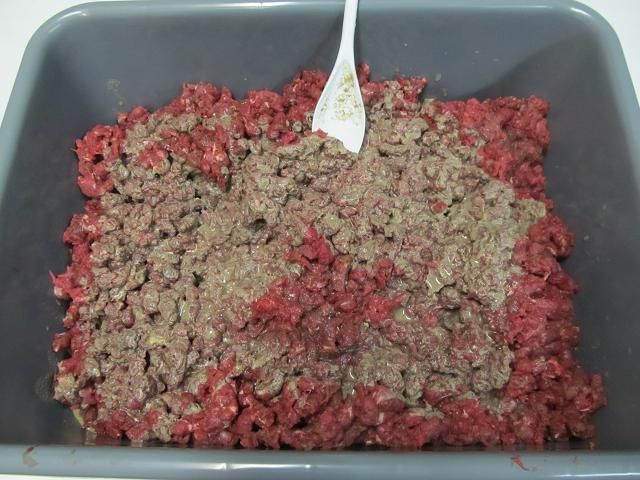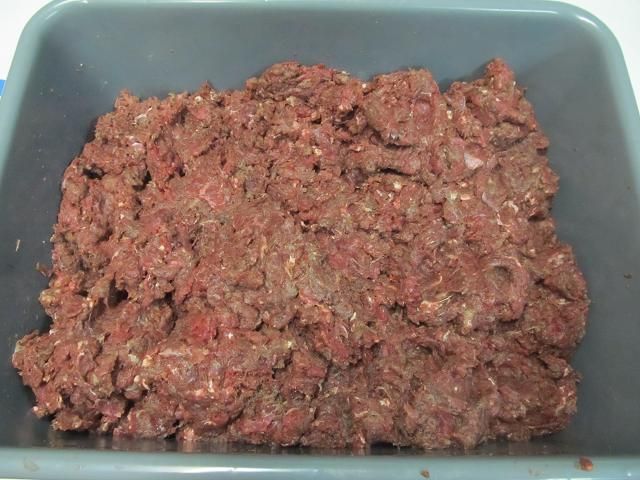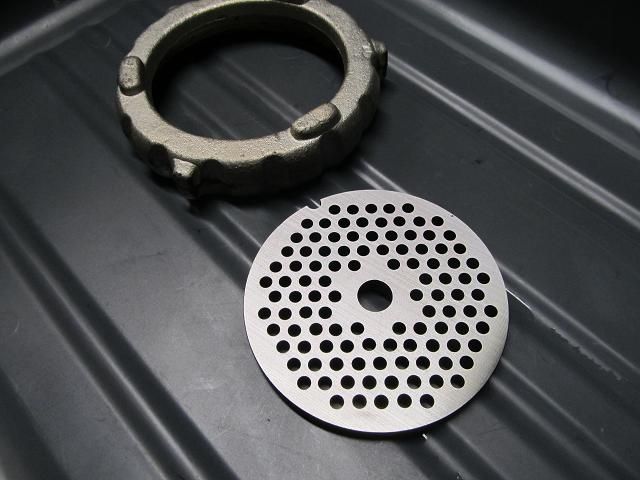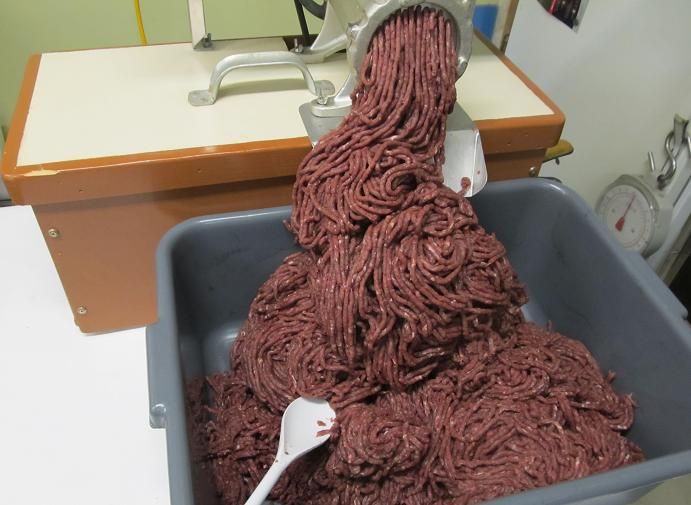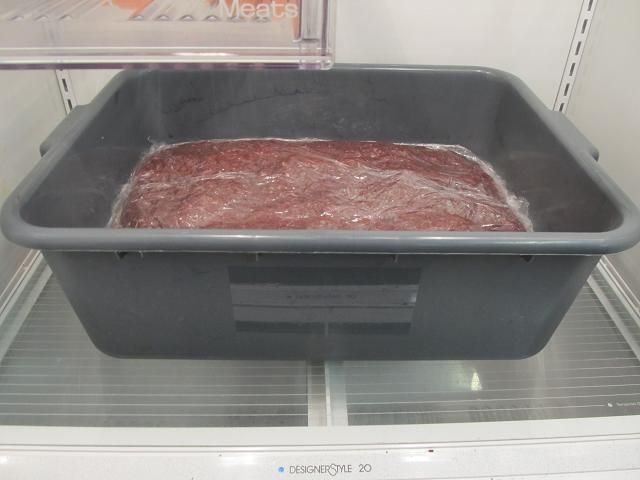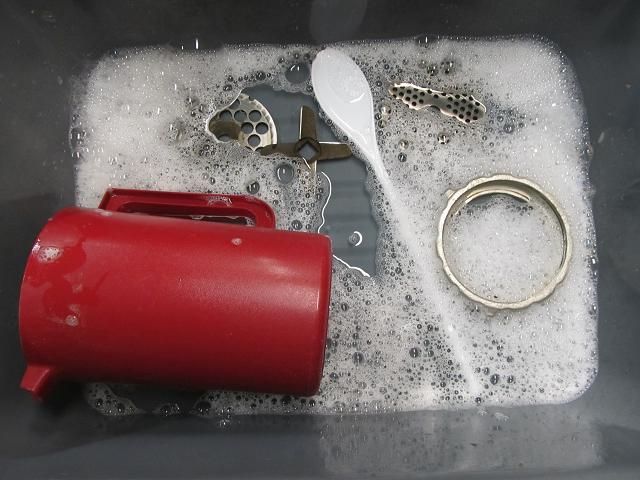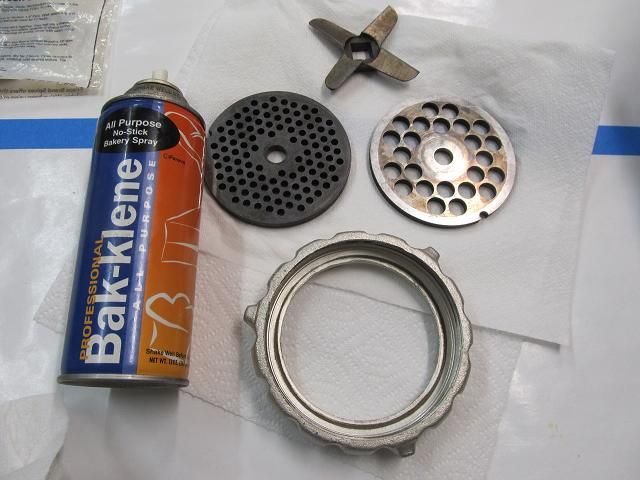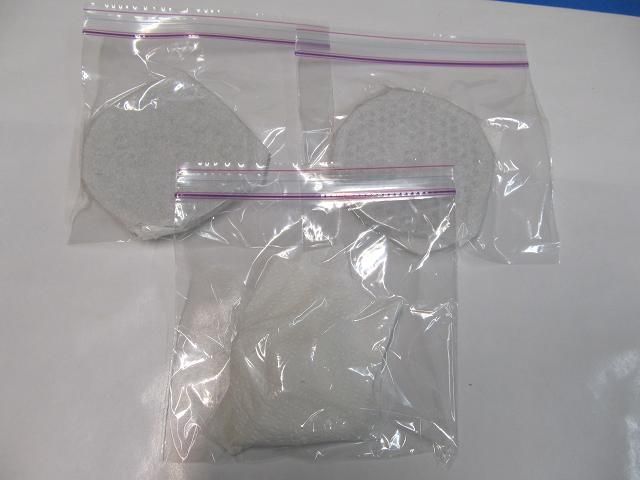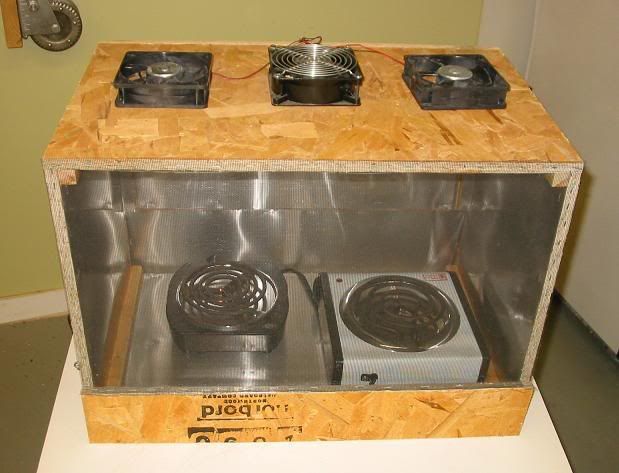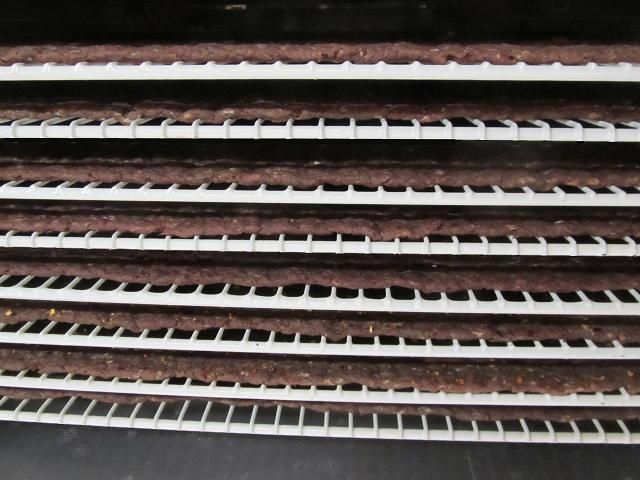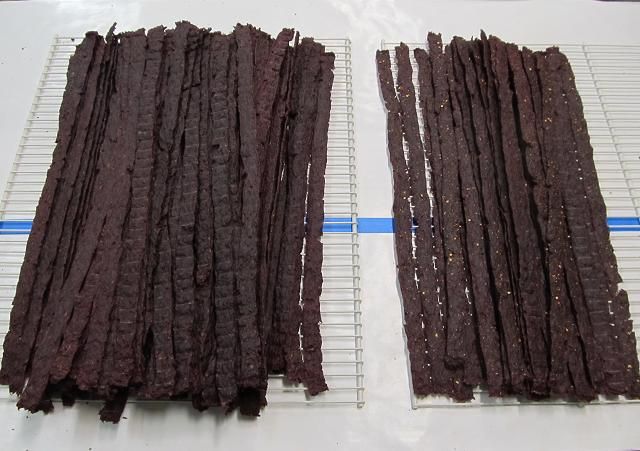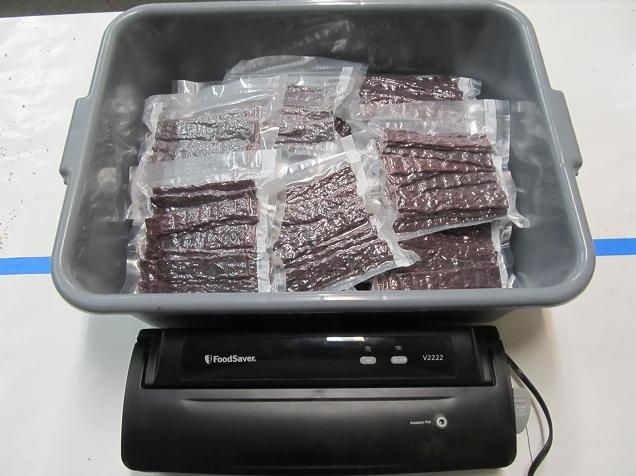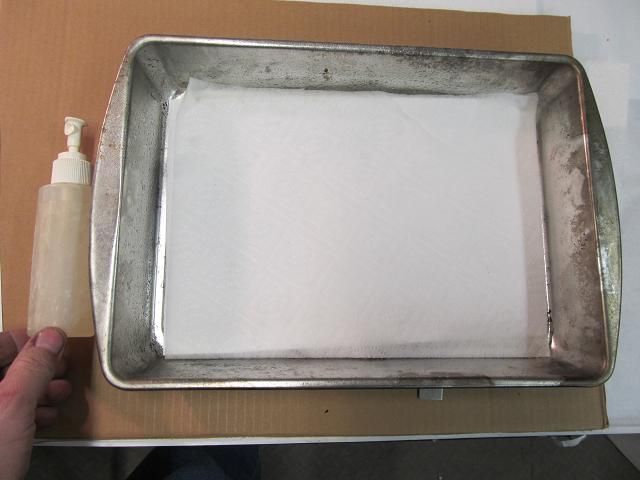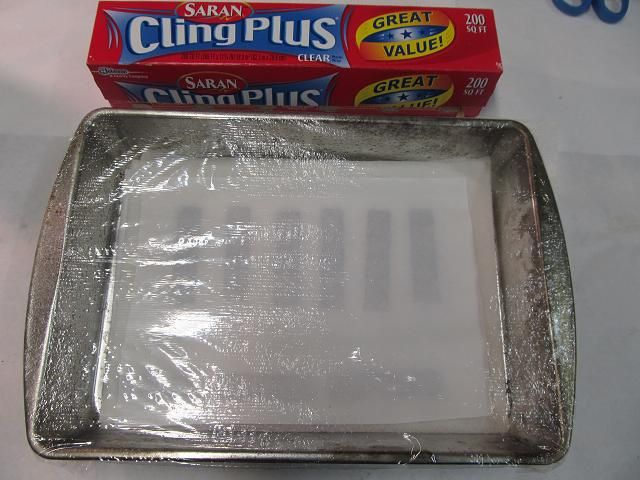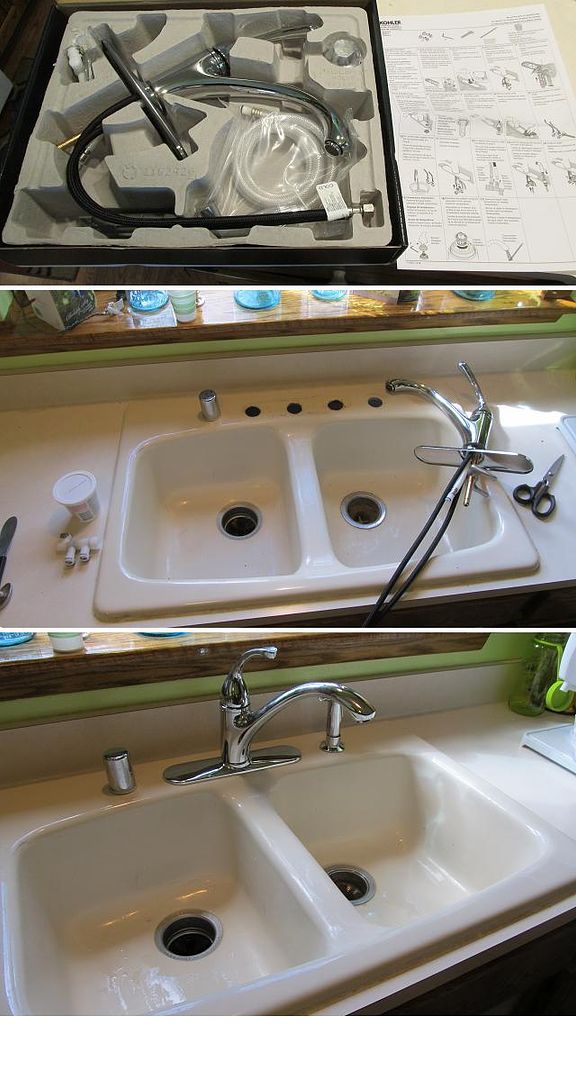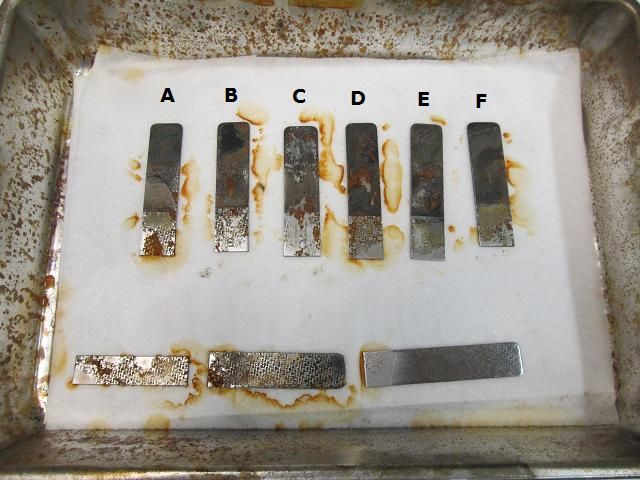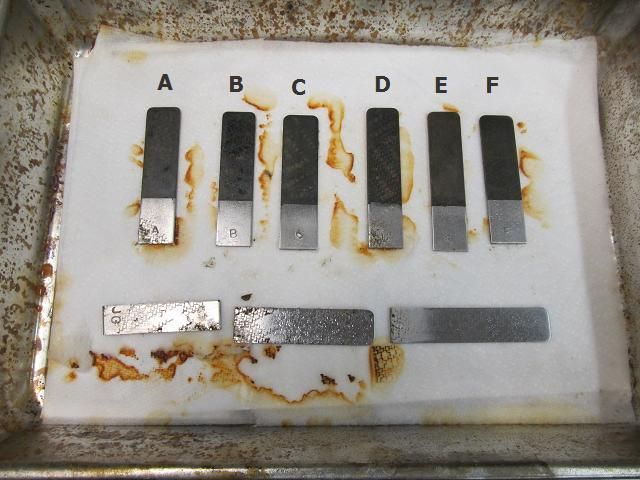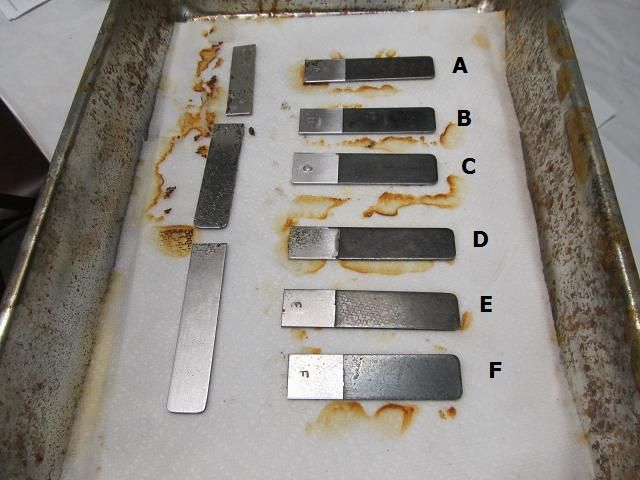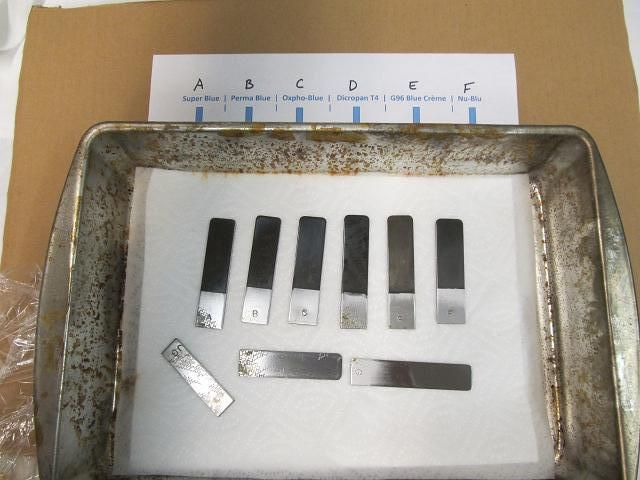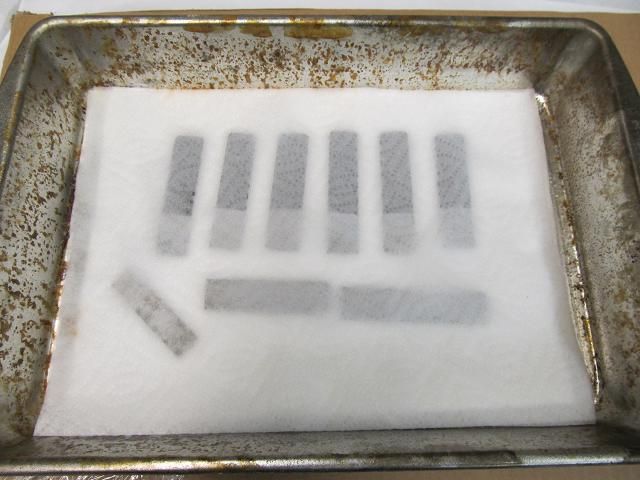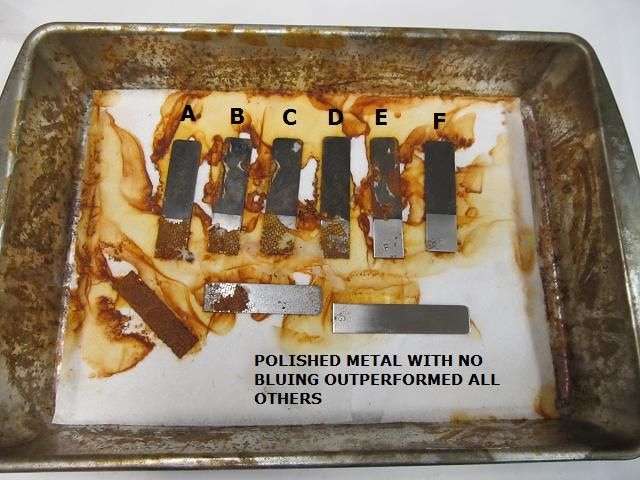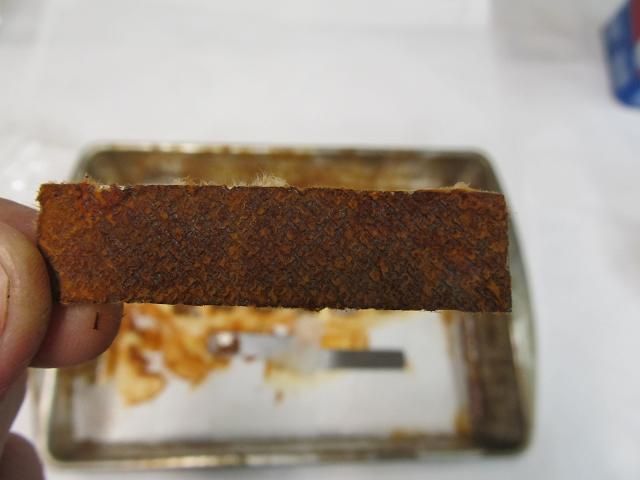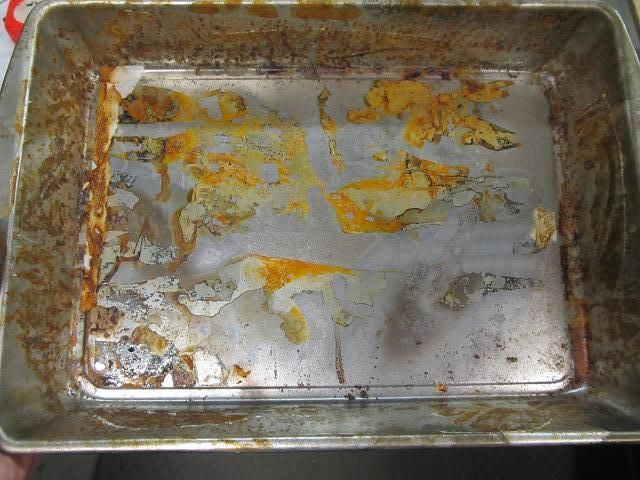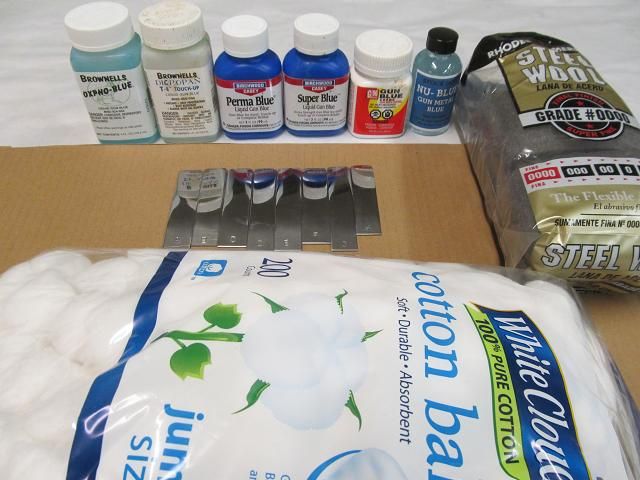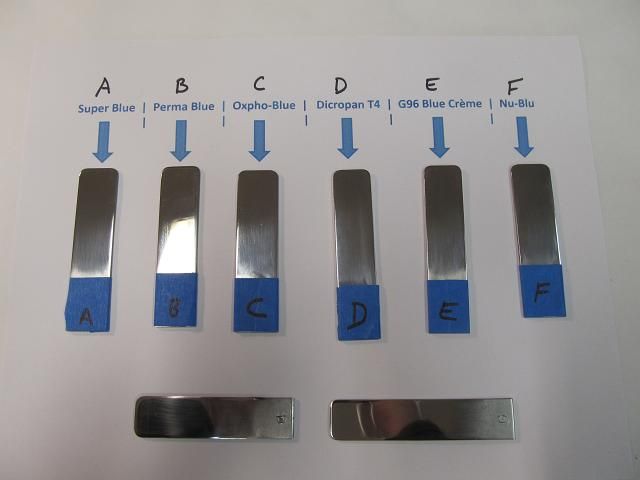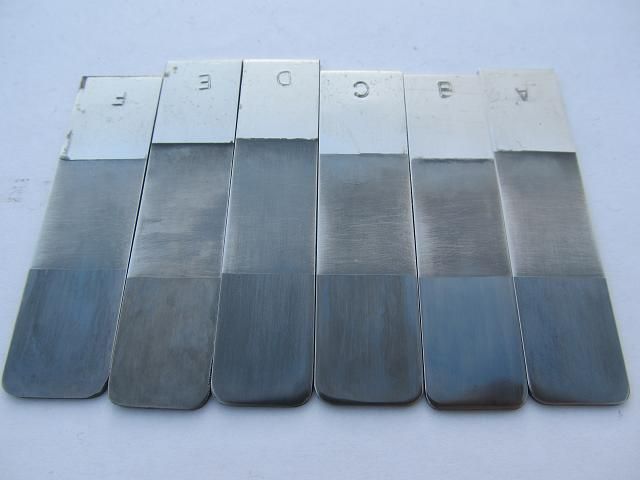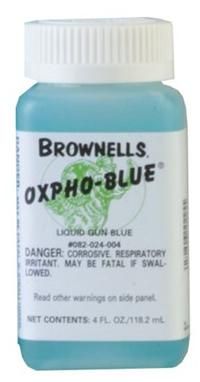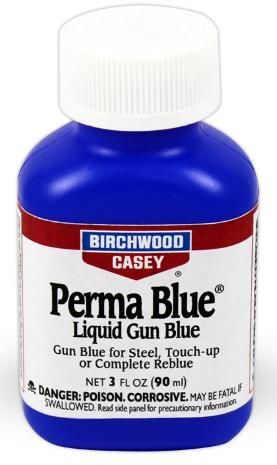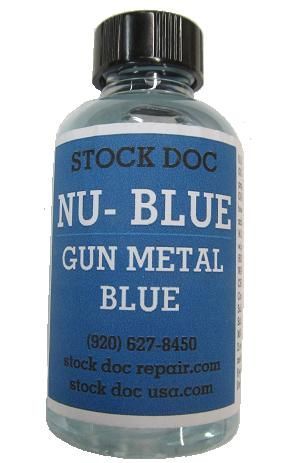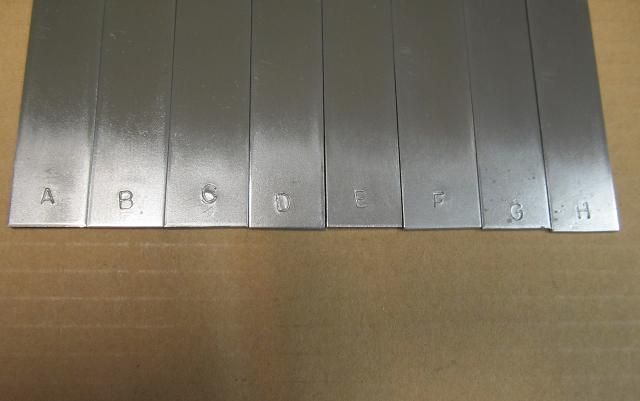76
Outdoor Related Craft Projects / DIY pickup truck tonneau cover
« on: May 16, 2016, 07:04:23 AM »
Because we will be attending more and more sports shows , we need a bit more security in the long bed of our truck (8 foot bed). We looked at tonneau covers and didn't care for the fabric versions as they can be breached with a knife. Other versions did not do what we wanted and it seemed all came in Black and that is not an option as the items under that black cover in the heat of the sun would be cooked in the incredible temperature that would be generated under a black cover. That heat would cook or bows and other gear.
So we opted to make a project out of it and make our own folding cover. It will be made from wood. We expect it to come in under $100, be about 50 pounds so one person can take it on and off and it will be the color of our choosing (a very light color). We may even decorate it our company logo. The frame will be pine and the cover will be 1/4" plywood. Everything will get two coats of raw wood primer and then 2 coats of paint in a color yet to be determined.

Until we began this project we were unaware that the bed of this truck actually tapers/narrows from front to back. We assumed it was a simple rectangle. The 3 sections of the cover will fold on themselves (3 hinges on each section) but would also be able to be opened individually as needed. Here are some pictures of the progress so far.

To match the curve of the tailgate we added a curved segment to the rear most section.


Construction is complete and its time to move onto the protecting it. 2 coats of Kilz primer.


The top side will be Behr Exterior "Silver Screen" in semi gloss.

But first, the underside (side nobody sees) will get two coats of exterior semi gloss in a camo green from a past project.

While the coats of paint dry, time to figure out how to project our logo on the cover so it can be painted on the top side.
The painting is complete so its time to fill in the blank slate

We want to paint our Black Claw logo on the rear-most section of the bed cover. But we may also add the Stay Sharp logo to one of the other sections.

To do this we need to project the Black Claw logo as a very large image (5 feet across), Since we don't have a projector we will make our own laptop projector. A couple of old cardboard boxes painted black inside.

The projection lens is an 8.5 x 11 lens from the dollar store.


The magnifying lens reverses the image so we had to flip it on the screen image.




I made the two boxes so I can slide the two to bring the image into focus.

The basement wall is the test backdrop and with the lights off it gets dark enough to be able to project using only the brightness of the laptop screen so we can pencil the logo in place to make it easier to paint following that pencil outline.

The projection is far clearer than this photo indicates but I could not use a flash.

After penciling the outline, it was time to paint.

One down, one to go.

While the primary concern and reason for this project is bed security we hope to make the folding cover as weatherproof as possible considering the fact that we have 3 sections and hinged jointsgaps. To make sure the seams are as small as possible the hinges were recessed in the wood.
To further discourage rain from entering through the hinge seam we thought the gap could be filled with flexible silicone rubber caulk. In order to make the seal as tight as possible the plan is to use a caulk gun to apply a bead (or beads) of caulk to one of the sides of the hinged joint and then close the cover causing the caulk to ooze out and fill the gap. To prevent the caulk from sticking to the other half of the joint, we applied a couple coats of paste furniture wax and buffed it. Once cured, the gap would be filled with flexible rubber and it wont stick to the waxed side of the joint.


The perimeter of the sections that come in contact with the side of the truck bed will get adhesive backed, rubber weather-stripping. This will quiet the vibration/noise that would otherwise occur between the hard plastic and the painted wood. It will help keep the paint from being abraded and will provide additional sealing from rain. It pretty cheap so if it wears it can easily be replaced.


Keeping the sections closed will be done with spring loaded plungers. We picked up a 10 pack on Ebay for $8. They have a lengthy throw distance but the handles were on the small side so we increased the size of the handles with short sections of micro diameter arrow shafting and J.B. weld. The nose of the retractable plungers will fit into holes we drilled through the hard plastic bed liner and metal of the bed. We used a 1/4" drill.



Because the sections fold onto one another I cant have a hard handle so we fashioned a handle from left over webbing.






The finished weight is 55 Lbs so its easy enough for one person to remove.
Here is a video showing how to install and remove the cover.
https://www.youtube.com/watch?v=UOkdUmA79W4
So we opted to make a project out of it and make our own folding cover. It will be made from wood. We expect it to come in under $100, be about 50 pounds so one person can take it on and off and it will be the color of our choosing (a very light color). We may even decorate it our company logo. The frame will be pine and the cover will be 1/4" plywood. Everything will get two coats of raw wood primer and then 2 coats of paint in a color yet to be determined.

Until we began this project we were unaware that the bed of this truck actually tapers/narrows from front to back. We assumed it was a simple rectangle. The 3 sections of the cover will fold on themselves (3 hinges on each section) but would also be able to be opened individually as needed. Here are some pictures of the progress so far.

To match the curve of the tailgate we added a curved segment to the rear most section.


Construction is complete and its time to move onto the protecting it. 2 coats of Kilz primer.


The top side will be Behr Exterior "Silver Screen" in semi gloss.

But first, the underside (side nobody sees) will get two coats of exterior semi gloss in a camo green from a past project.

While the coats of paint dry, time to figure out how to project our logo on the cover so it can be painted on the top side.
The painting is complete so its time to fill in the blank slate

We want to paint our Black Claw logo on the rear-most section of the bed cover. But we may also add the Stay Sharp logo to one of the other sections.

To do this we need to project the Black Claw logo as a very large image (5 feet across), Since we don't have a projector we will make our own laptop projector. A couple of old cardboard boxes painted black inside.

The projection lens is an 8.5 x 11 lens from the dollar store.


The magnifying lens reverses the image so we had to flip it on the screen image.




I made the two boxes so I can slide the two to bring the image into focus.

The basement wall is the test backdrop and with the lights off it gets dark enough to be able to project using only the brightness of the laptop screen so we can pencil the logo in place to make it easier to paint following that pencil outline.

The projection is far clearer than this photo indicates but I could not use a flash.

After penciling the outline, it was time to paint.

One down, one to go.

While the primary concern and reason for this project is bed security we hope to make the folding cover as weatherproof as possible considering the fact that we have 3 sections and hinged jointsgaps. To make sure the seams are as small as possible the hinges were recessed in the wood.
To further discourage rain from entering through the hinge seam we thought the gap could be filled with flexible silicone rubber caulk. In order to make the seal as tight as possible the plan is to use a caulk gun to apply a bead (or beads) of caulk to one of the sides of the hinged joint and then close the cover causing the caulk to ooze out and fill the gap. To prevent the caulk from sticking to the other half of the joint, we applied a couple coats of paste furniture wax and buffed it. Once cured, the gap would be filled with flexible rubber and it wont stick to the waxed side of the joint.


The perimeter of the sections that come in contact with the side of the truck bed will get adhesive backed, rubber weather-stripping. This will quiet the vibration/noise that would otherwise occur between the hard plastic and the painted wood. It will help keep the paint from being abraded and will provide additional sealing from rain. It pretty cheap so if it wears it can easily be replaced.


Keeping the sections closed will be done with spring loaded plungers. We picked up a 10 pack on Ebay for $8. They have a lengthy throw distance but the handles were on the small side so we increased the size of the handles with short sections of micro diameter arrow shafting and J.B. weld. The nose of the retractable plungers will fit into holes we drilled through the hard plastic bed liner and metal of the bed. We used a 1/4" drill.



Because the sections fold onto one another I cant have a hard handle so we fashioned a handle from left over webbing.






The finished weight is 55 Lbs so its easy enough for one person to remove.
Here is a video showing how to install and remove the cover.
https://www.youtube.com/watch?v=UOkdUmA79W4
























